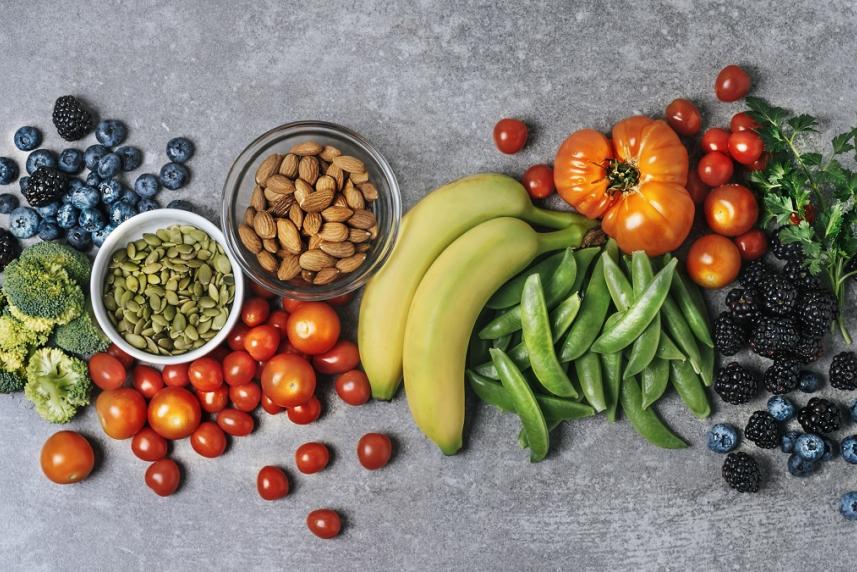What antioxidants actually do
You’ve heard the hype. Now read about the realities of this nutritional buzzword.

If you’ve ever watched a superhero movie, you probably understand the concept of good versus evil. Yes, you root for the hero against the villain. But for there to be a compelling story—not to mention a sequel—it’s not about who wins. It’s about balance.
Antioxidants and free radicals are kind of like that. Antioxidants are “good” and free radicals are “bad.” But your health actually depends on a balance of the two.
“People think free radicals are some harmful additive and antioxidants are some wonder drug,” says Kristen Gradney, a registered dietitian in Baton Rouge, Louisiana, and spokesperson for the Academy of Nutrition and Dietetics. But really, both occur naturally in the body.
The Battle Between Antioxidants and Free Radicals
Free radicals are byproducts of normal metabolic processes, like when your body is recovering from exercise or turning food into energy. They can also come from outside sources: food (such as processed snacks), air (pollution or cigarette smoke), or sun exposure.
There are many kinds of free radicals, but they all do one thing: steal electrons. Electron theft turns other cells into free radicals and alters their functions.
Antioxidants, on the other hand, are generous. They work by handing out electrons freely to free radicals, neutralizing them so they leave other cells alone. Vitamins, for example, are types of antioxidants.
“The antioxidant is like PAC-MAN,” says Gradney, “swallowing up the free radicals—the little ghosts—and preventing them from causing harm.”
A balance between free radicals and antioxidants is crucial for normal healthy function. But if that balance is disturbed, that’s when problems arise.
What Happens When Free Radicals Win
When you have a buildup of free radicals, that’s called oxidative stress. This could occur due to a number of reasons: Higher levels of free radicals can be produced if you have an infection, you smoke, or you’re exposed to radiation or pollution. In the short term, your immune system repairs the damage. But in the long term, it can speed up the aging process and lead to medical conditions.
In the 1990s, scientists began to link free radical damage to chronic conditions like heart disease, cancer, and vision loss. They noticed that people with a low intake of antioxidant-rich fruits and vegetables had a higher risk of these diseases.
Likewise, large observational studies have shown that people who eat more fruits and vegetables have a lower disease risk.
The More Antioxidants the Better, Right?
Well, not so fast. “Antioxidants are viewed as a cure-all,” says Gradney. “But, in actuality, you get what you need as long as you have a good intake of fruits and vegetables.”
Bingeing on supplements is not likely to help. That’s because science isn’t quite sure if the antioxidant alone can fight off free radicals without its natural “packaging”—the minerals, fiber, and other substances found naturally in foods with high levels of antioxidants (like vegetables, fruits, and whole grains).
That said, if you have a hard time getting an adequate amount of antioxidants into your diet, you can take a supplement, says Gradney. But skip the mega doses.
“Look for ‘100 percent’ of your daily value on the label,” says Gradney. “That is the amount your body needs to function well. If you go over 100 percent, that doesn’t mean you’ll have an overabundance of antioxidants in your body. It means you’ll probably excrete the rest.”
But some vitamin supplements in excess may even be harmful—in particular, fat-soluble vitamins like A, E, and D, which are absorbed by fat cells and not as easily excreted. (Supplementing with super-high doses of vitamin E, for example, has been shown to raise risks of prostate cancer and one type of stroke.) What’s more, antioxidant supplements may interact with some medicines.
To play it safe, always keep your daily dose well below the Tolerable Upper Intake Level, the highest level of daily nutrient intake above which you risk adverse effects. Or better yet: Skip the pills and eat a healthy diet rich in plant-based foods—you can’t overdose on antioxidants from foods alone.
How to Maximize the Benefits
Antioxidants are not all the same, hence their names: vitamins A, C, D, and E, plus the dizzying array of B vitamins and other compounds, such as curcumin. They likely evolved as parts of elaborate networks, with each playing its own unique role. Asking one substance to do all the work is like asking a single company employee to run the whole show.
Your move: Aim for a wide variety of plant-based foods in your diet. That includes fruits, vegetables, beans, nuts, seeds, and whole grains.
“Eat a variety of colors,” says Gradney. “Every color is a different antioxidant compound.”
Even some animal-based foods, like meat and dairy products, contain antioxidants from the nutrient-rich plants the animals eat.
Fortified foods can also help, says Gradney, but don’t automatically assume a food is healthy if you see the A-word on the label. Check the nutrition facts to see how much of that vitamin you’re actually getting.
Bottom line: Fruits and vegetables are your best bet. “The recommended amount of fruits is four servings and vegetables is five servings a day,” Gradney notes.
What does that look like? Imagine two cups of fruit and two-and-a-half cups of vegetables. “Combined, that’s more than almost every other food group. That helps us get the good dose of vitamins that we need.”
That way, the “hero” can keep the “villain” in check. Because, as moviegoers know, sometimes heroes cannot survive without a little evil in their world.


